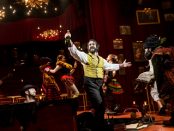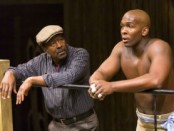Lempicka
In telling the life story of Tamara de Lempicka, the show begins with a fascinating premise. Unfortunately, neither the score nor the book lives up to her high standards. Unlike "Sunday in the Park with George" which showed us the workings of the artistic process, "Lempicka" is more interested in the social aspects of the 1920’s and 1930’s Paris than in Tamara’s revolutionary paintings. The cast works hard to put over the new musical but they are defeated by commonplace situations, banal song lyrics, and over-used pronouncements. The musical of Tamara de Lempicka’s life still has to be told. [more]






